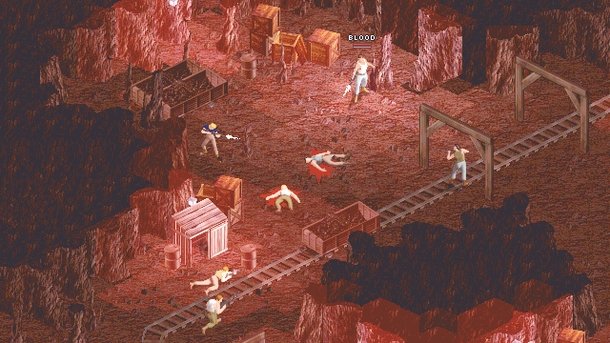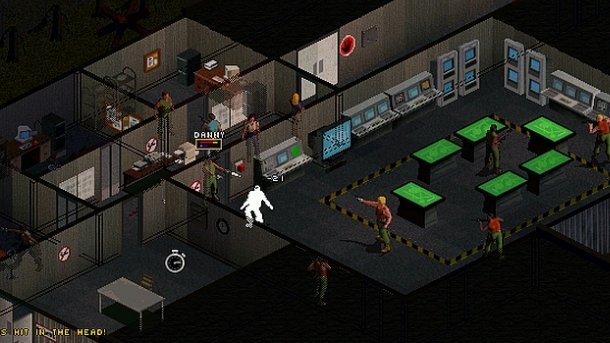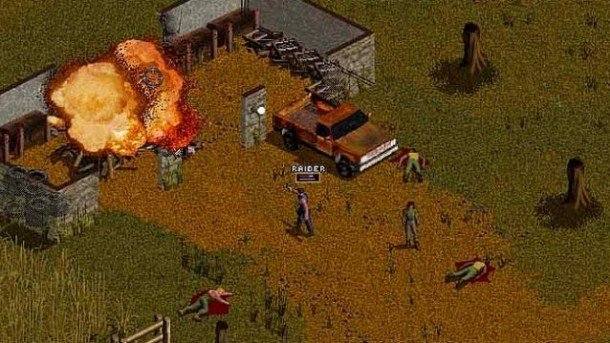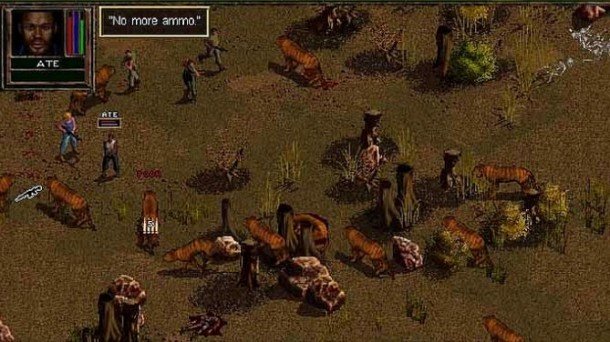Jagged Alliance 2 is tactics-RPG perfection, especially with the 1.13 mod
Reinstall.

Reinstall invites you to join us in revisiting classics of PC gaming days gone by. This time, we roll into tactical RPG history with our soldiers of fortune in Jagged Alliance 2.
The Hamburglar has fatally misjudged the blast range of TNT. Wayne Gretzky is dead, too—his blood all leaked out on an airport runway through a sniper hole between the lungs. I can't keep my team of fantasy mercenaries alive.
Naming a party of characters is one of the game-given rights of X-COM-like turn-based tactical RPGs. It's instantly gratifying to take a commando named after your cat into combat. And when permanent death is a possibility, it's a way of emotionally investing yourself in the animated sprites you're sending into harm's way.
Jagged Alliance 2 didn't release with that feature, but the community-produced 1.13 patch/mod that I'm playing with adds it. It injects content into PC gaming's best late-comer to the isometric tactical RPG party without altering any story or quests. Easily installed, 1.13 doesn't change JA2's identity—it's still a game of deliberate, tactical gunplay that feels like South American guerrilla chess, in which you hire a team of mercenaries to stage an insurrection against the unruly queen of Arulco. And there's still charming '90s action-humor threaded through the plot ("Let's pop some zits!" one lady-merc yells when an enemy is spotted).
1.13 enhances what's there, upping the maximum resolution, adding hundreds of new weapons—including gratifying super-items like Ghillie suits and depleted-uranium bullets—reorganizing hotkeys and altering the AI so that enemies flank better, take cover more often, climb onto roofs, and utilize suppressive fire.
Playing back through JA2 with 1.13 appended is an exercise in intricate tactics and character development. There are so few RPGs that make the act of fostering a party member a series of small-but-meaningful decisions in the way that JA2 does. By the third mission—the liberation of a mine and sweatshop in Drassen—you're juggling piles of pistols and equipment that you've inherited from deceased enemies or found lingering in rooms, closets, shelves and refrigerators that you explore during and after combat.

But characters don't have a generic inventory—you can pick between pistol holsters (and which leg to strap them to), harnesses or backpacks, and each of these bags has a different weight and capacity associated with them. What those granular bits of design create is room for more creativity and ownership over your characters.
The biggest gaming news, reviews and hardware deals
Keep up to date with the most important stories and the best deals, as picked by the PC Gamer team.
In the middle of my playthrough I had a knife-wielding explosives expert that I used to breach walls and lay traps, a dual-pistol-wielding femme fatale, a frail, dedicated medic, and a 96-marksmanship sniper that could dismantle enemy ambushes with his Dragunov rifle.
There's also an unconventional mechanic for improving characters. In lulls between combat, you can set any character to be a 'trainer' or 'student', using a merc with high mechanical or agility training to teach another. In the same way, you can train friendly NPC militia within towns that you've cleared to fight better on your behalf. I hired a merc named Raider for a two-week, $20,000 job just so he could boost my militia in the town of Omerta.

All that detail is by design: building an ambidextrous lady-assassin feels like it was my idea, not the developer's. And those choices feel honored by the game when you're in a gunfight with sim-like—but unintimidating—nuance to its combat system.
Moving my mercenaries around the country map, I encounter a random enemy patrol in Omerta. I bunker up in a withered shack at the center of the village, delicately arranging my mercs to cover windows and doorways on opposite walls, giving a clear view of the perimeter. My plan: pick off an enemy or two that wanders too close, and wait for the sound of gunfire to draw the rest to my easily-defended position. Suddenly, an enemy skullshots my scout, Marty McFly. He's critically wounded and bleeding out, but I need to deal with the tank-topped jerk that shot him before I can help.
I drop Marty to a prone position at the windowsill, and turn my sniper, Sheila "Scope" Sterling, to fire over Marty's shoulder. Her weapon jams—and because Sheila's mechanical skill is so low, it'll likely take several turns to fix. My medic is busy bandaging Marty. What are my options?
I try the stupidest tactic possible: I sprint my explosives guru, Fidel, out the back door and through the grass toward the enemy sniper. A hail of bullets catch him, but he retains enough HP to reach the edge of the house the enemy's firing from. I place his C1 explosive at the perimeter, then run him away on the next turn and detonate the bomb from a safe range, breaking the wall and obliterating the shooter behind it.

Like other excellent tactics-RPGs, JA2 isn't afraid to make freedom (including the freedom to fail) a key trait of its combat system. Almost all the fighting you'll do is unscripted. Heroics arise from planning, improvisation and a little luck. The fact that an automatic weapon can accidentally fire more rounds than you intended—as an interaction between the gun and your character—is such a sweet, surprising nuance.
The other side of that coin, of course, are the grueling, random situations you stumble into: turning a blind corner can reveal an SMG-wielding enemy ready to instantly send your top commando. But that fear of lost characters feels meaningfully frustrating to me. When Marty McFly died in a swamp, I had a 10-minute debate with myself over whether to revert to my last save game. If a game's goal is to stimulate emotion, JA2 succeeds.

Evan's a hardcore FPS enthusiast who joined PC Gamer in 2008. After an era spent publishing reviews, news, and cover features, he now oversees editorial operations for PC Gamer worldwide, including setting policy, training, and editing stories written by the wider team. His most-played FPSes are CS:GO, Team Fortress 2, Team Fortress Classic, Rainbow Six Siege, and Arma 2. His first multiplayer FPS was Quake 2, played on serial LAN in his uncle's basement, the ideal conditions for instilling a lifelong fondness for fragging. Evan also leads production of the PC Gaming Show, the annual E3 showcase event dedicated to PC gaming.

